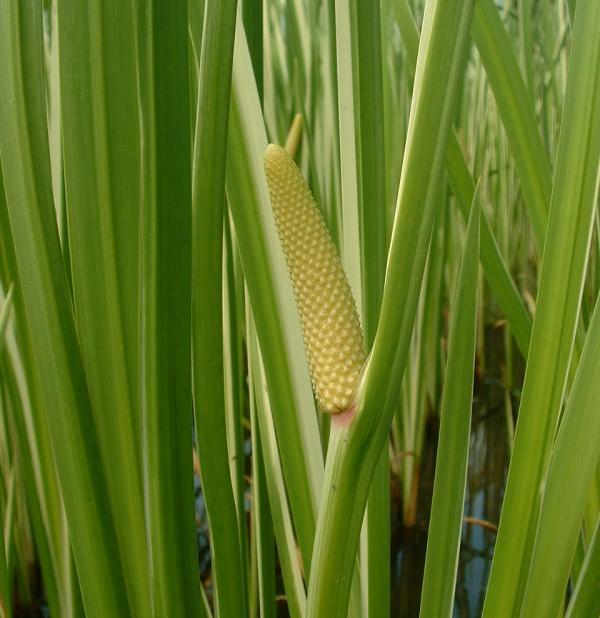Products

Calamus (Bojho)

- Botanical Name: Acorus calamus
- Family: Araceae
- Flowering and fruiting:
- Parts Used: Rhizomes
- Distribution: 500 - 2300 m, east to west
- Method of Extraction: Steam Distillation
Description:
A rhizomatous herb growing on marshy places. Leaves are bright green, 15 - 25 cm long and 0.2 - 0.5 cm broad, uniform with distinct midrib. Flowers small, yellow green arranged in cylindrical spandex. Known since biblical times, the aromatic rhizome (underground stem) of Acorus calamus L. is commonly referred to as calamus or sweet flag, Bhojo in Nepali. Calamus has been taken over the centuries as a remedy for various sorts of digestive upsets and colic, especially in children. Calamus is a perennial herb. It is commonly found in moist habitats such as the banks of ponds or streams and in swamps throughout Nepal.
| Specification of Calamus (Bojho) | |
| 1. Organoleptic Properties | |
| Appearance | Slightly viscous liquid |
| Color | Yellow to yellowish brown |
| Aroma | Warm woody-spicy |
| 2. Physico-chemical Properties | |
| Specific gravity | 1.0695 to 1.0795 at 23°C. |
| Optical rotation | (-) 0.2º to (-) 0.5º at 23º C |
| Refractive index | 1.5335 t0 1.5589 at 23°C. |
| Acid number | 0.6 to 2.5 |
| Ester number | 2 to 12 |
| Ester number after acetylation | 8.5 to 12 |
| Solubility | Soluble in 0.4 to 1.5 volume of 80% alcohol |
| 3. Chemical constituent: | |
| The main chemical components are acorenone, b-gurjunene, isoshyobunine, b-asarone, calamendiol, a-selinene, a-calacorene, calamusenone, camphone and shyobunone. | |
| 4. Uses | |
|
|
